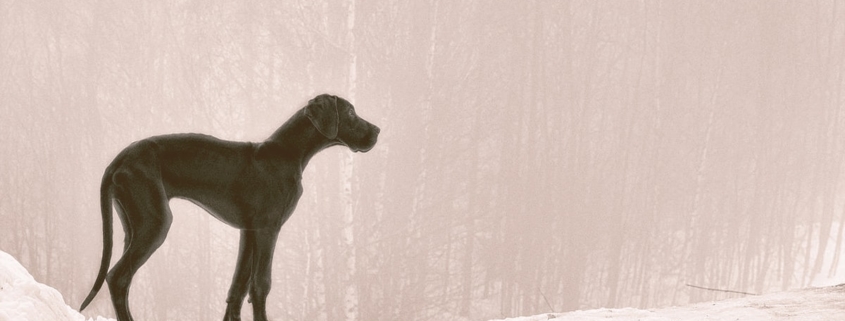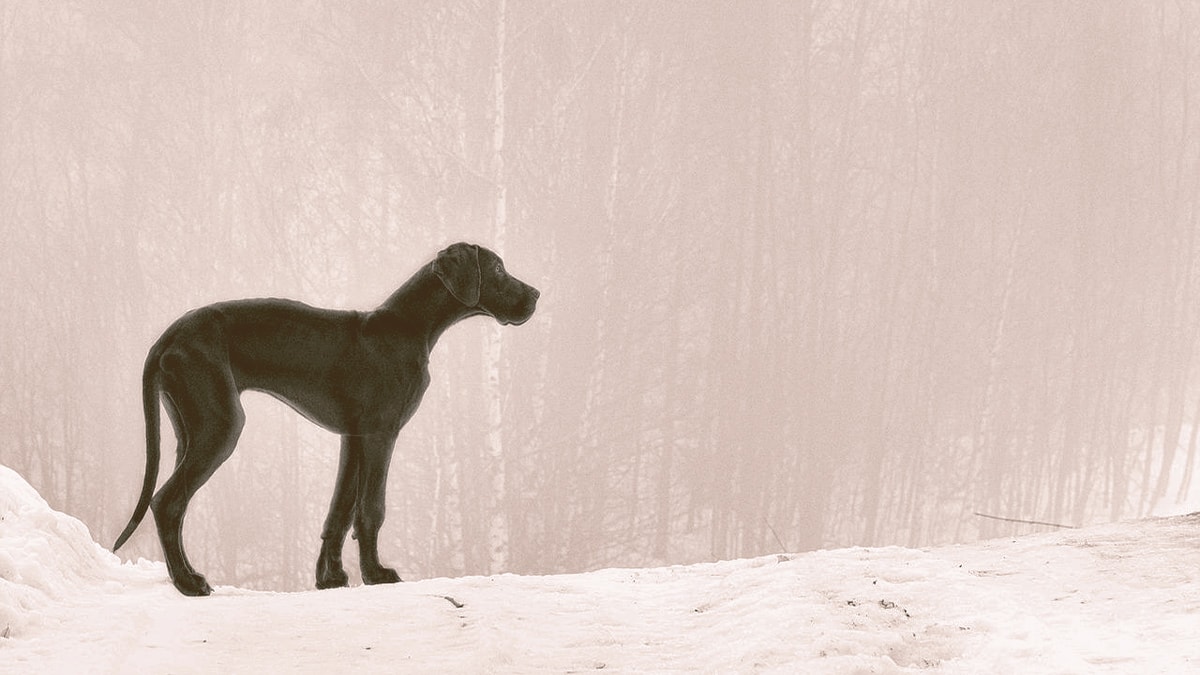
18 Dog Breeds With Shortest Lifespan
Alex Vicente • Updated on August 1, 2023
- This review contains affiliate links. Read more here.
- Not a substitute for professional veterinary help.
Dogs are known as man’s best friends.
Unfortunately, their lifespans typically do not match up with the people that they love. Some dogs only make it to a short five years, while others last as long as thirty.
Some canine aging processes happen much quicker than others do of different breeds.
The dogs listed here have the shortest lifespans out of all of the canines on the planet.
Read on to learn about these breeds and their length of life.
We will also discuss why they cannot survive on this earth as long as others, though they may be healthy and well taken care of.
Table of Contents
The Great Dane
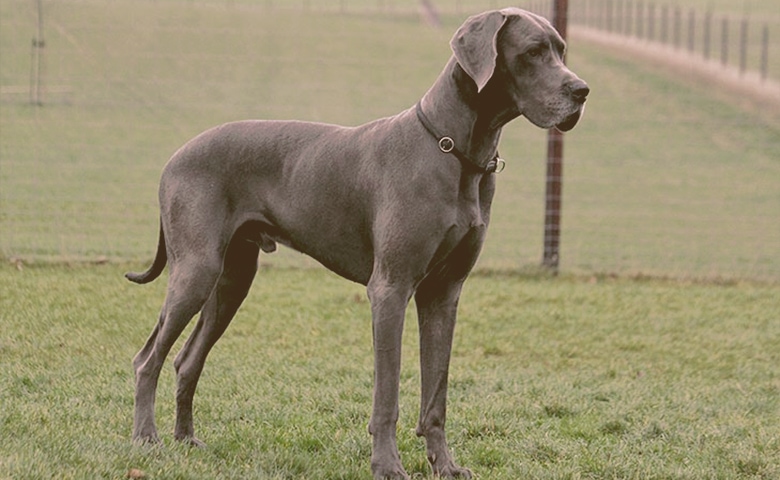
The Great Dane is first up on the list of pups that have a limited number of years. These pups are bred to be gentle and tolerant. Thanks to their lazy and friendly personalities, they make for excellent family dogs no matter how big or small the members may be.
This giant canine has an average lifespan of 8-10 years, with the double digits being on the longer side for this great giant. Their years are so limited based on breeding health issues and the massive size of their bodies. Most often, Great Danes tend to pass away from:
- Cancer, particularly of the bone and brain
- Heart disease, which gets worse as the dog ages and the valves weaken
- Gastric torsion, which is an intense form of bloat that occurs within a dog’s intestinal system
Height plays a lot of factors in this. When a Great Dane gets older, their internal system has a hard time keeping up since the dog is so big. Some Great Dane bodies age better than others. However, this limited lifespan is what the average pup and its owner must deal with.
The Bernese Mountain Dog
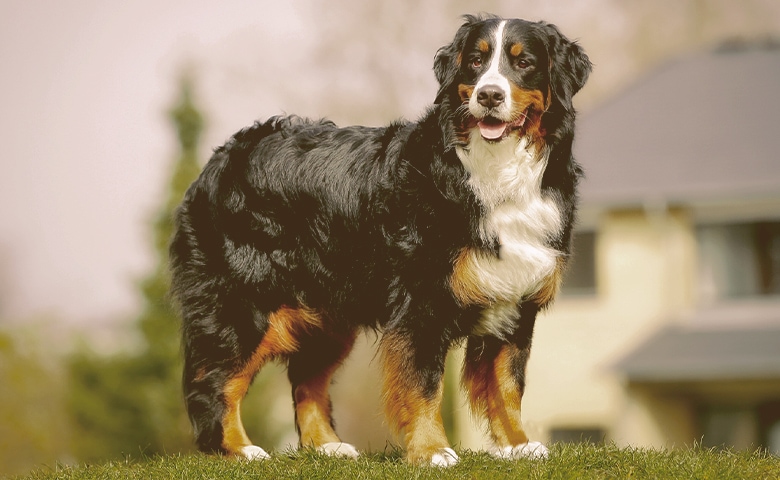
The Bernese Mountain dog is yet another popular breed that falls on this list. This cuddly teddy bear of a dog was bred to be a working-class canine, set to pull cattle and serve as loyal companions to their owners. They are one of the least aggressive dog species in the world, making them excellent family pups.
The Bernese Mountain Dog has a lifespan of 6-8 years, which is one of the shortest of the canines on this list. As with most, this has to do with the way that they are bred and will continue to be bred to achieve perfection. The Bernese Mountain Dog is prone to a variety of health issues, which include:
- Cancer, particularly malignant histiocytosis
- Hip Dysplasia, which hurts the joints of your dogs
- Arthritis, which can limit their overall quality of life
- Cruciate Ligament Rupture, which is a more extreme form of ligament pain
The Bernese Mountain Dog is an active breed. Since they are prone to mobility issues, their quality of life drops if they cannot always be on the move. This decrease in enjoyment of living leads to the short lifespan that this friendly dog possesses. It is important to talk to a vet at this point with such an active dog.
The French Mastiff
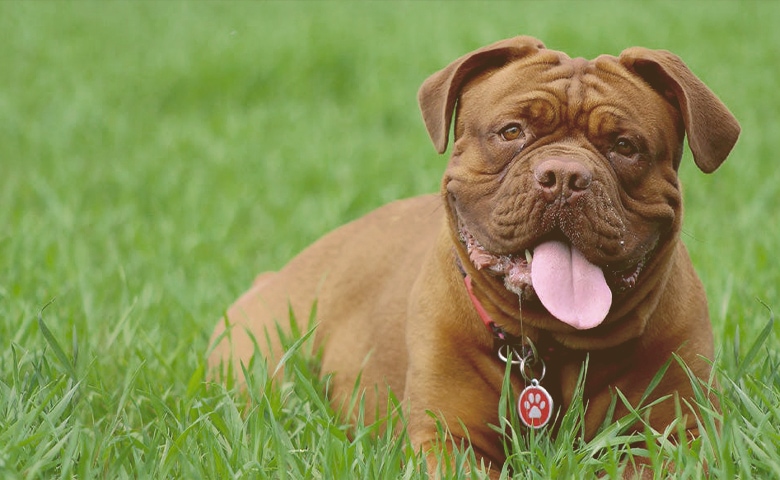
French Mastiffs are a type of dog that has been around for a long, long time. In times long ago, they were used as hunting and guard dogs for those who owned them. Now, they operate as gentle pets for those who need a fuzzy companion. French Mastiffs often work as service dogs in hospitals or in the homes of those who require it.
The lifespan of a French Mastiff is about 5-8 years. Since they have been around so long, this breed has been subjected to much inbreeding. The health issues that they experience include:
- Cancer, particularly lymphoma or lymphosarcoma
- Stomach torsion
- Heart disease, particularly subaortic stenosis
These sweet pups have one of the lowest life spans of all dog breeds. Luckily, they are wonderful dogs that will fill anyone’s life with joy in the short time that they can inhabit the planet. French Mastiffs are true family dogs that will bend over backward for those that they love.
The Chow Chow
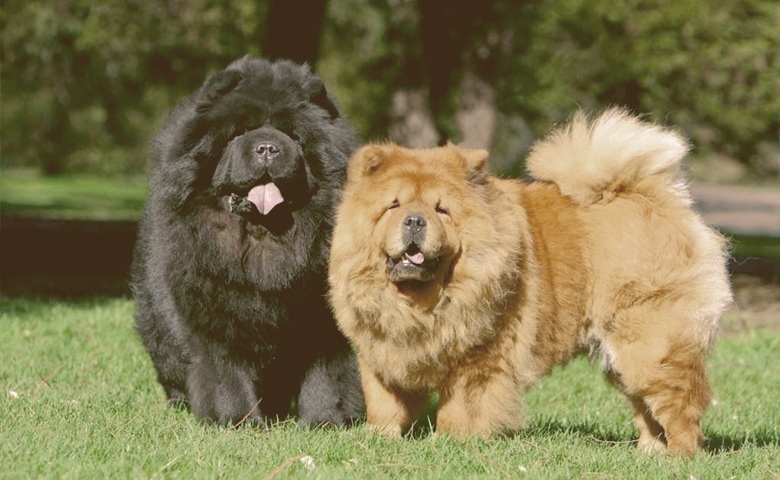
The Chow Chow has origins in China and various parts of Asia. They were used for a variety of purposes. Ever since then, they have spread around the world as a result of their unique look. They can sometimes be aggressive and stubborn, but these traits make them the perfect companion for the right person.
Like many dogs that are created for their look, the Chow Chow faces many health issues that make its lifespan range from 8-11 years. The dogs most commonly face illness from difficulties such as:
- Degenerative Myelopathy, a disease in the spinal cord that often leads to paralysis in some form
- Patellar Luxation, which is a format of chronic dislocation in the knees
- Cancer, especially inside of the stomach
- Autoimmune Thyroiditis, an issue with the autoimmune system of the thyroid
Although most Chow Chows do not have an astounding lifespan, there are documented cases of this breed living up to sixteen years in select dogs. They have a short predicted amount of years to live, but there is always the chance that they may defy those odds.
The English Bulldog
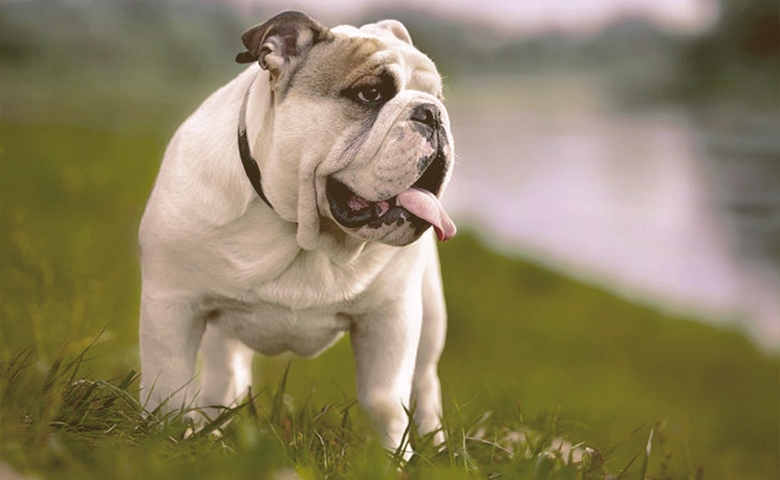
The English Bulldog is a popular breed that has been at the center of controversy for years. Its distinct folded face is what makes it so popular, but breeding to get this trait has led this dog to lose its ability to breathe. Still, the English Bulldog is a pet that can be found in many households thanks to its favored qualities.
Thanks to the history of inbreeding, English Bulldogs have a lifespan of only 8-10 years. Though they are often small, their health issues continue to worsen as the years go on and they are bred further. English Bulldogs are prone to items such as:
- Cancer, especially in the form of lymphoma and mast cell cancer
- Arthritis
- Aspiration pneumonia
- Heart disease
- Brachycephaly, or a severe skull deformation that often goes unnoticed
- Laryngeal Paralysis, which is the decreased ability to use the larynx
There are many other issues that this breed has, though not all of them are deadly if taken care of. The more this dog is inbred to achieve the chubby smooshed face, the shorter its years on earth will become. Unfortunately, this inbreeding will likely continue as the English Bulldog grows in popularity.
The Irish Wolfhound
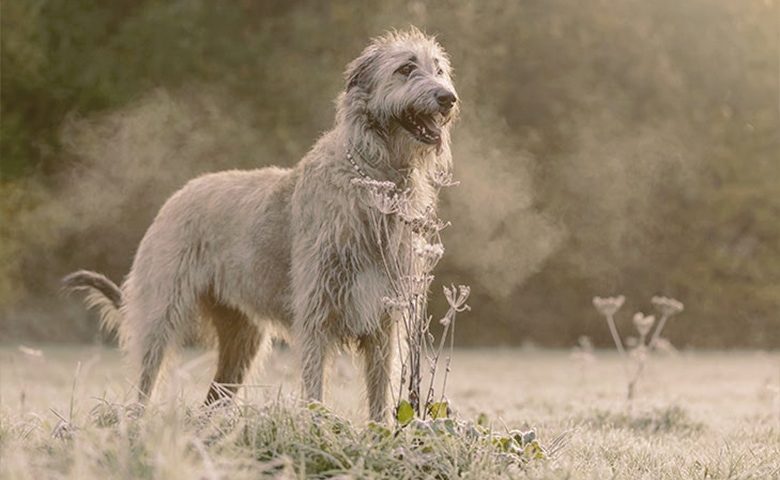
The Irish Wolfhound is a wiry breed that has grown in popularity over time. They are known for being noble, loyal, and sweet-tempered. These wonderful pups even have a place in mythology, serving as companions throughout time. They are great for anyone seeking a companion in their life.
As with most big dogs, the Irish Wolfhound does not have a very long lifespan. It ranges from 6-10 years at the most. Thanks to breeding and the sheer size of these dogs, this will continue to go down over the years. Some of the health issues that contribute to this short span of years include:
- Heart disease
- Cancer, particularly in the bones
- Stomach torsion
All of these can come on suddenly, or emerge over a long period. There are always some dogs that will outlive others despite the given statistics. It is hard to know what your dog’s genetics will do for them until a health crisis emerges, and then you must make your decisions from there.
The Saint Bernard
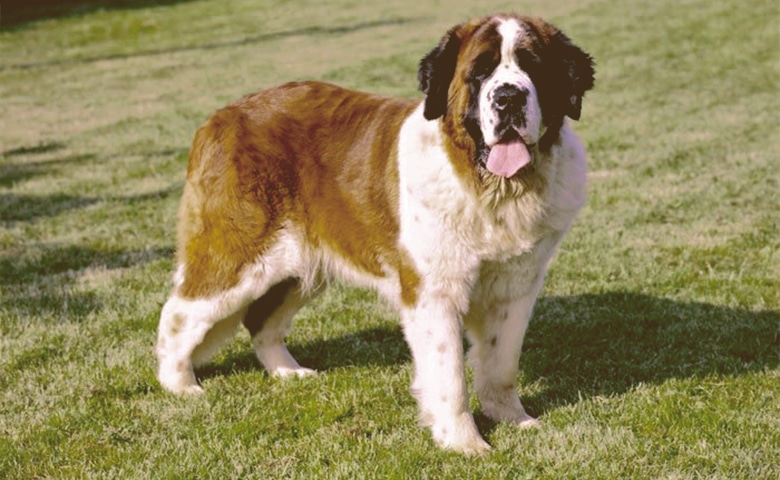
For anyone who adores a furry dog, Saint Bernard is a crowd favorite. They were bred as working dogs and still hold the loyal and mellow attitude that came from the work that they accomplished. Saint Bernards are generally very calm, but they can be playful in the right context. These powerful teddy bears will care for anyone they are placed with.
The Saint Bernard’s lifespan is 8-10 years, standard for most medium dogs and pretty good for a pup that can be upwards of 200 pounds. Unfortunately, it is still not a long time compared to others. Some of the largest health problems a Saint Bernard faces include:
- Heart disease, in particular, dilated cardiomyopathy
- Gastric torsion
Heart disease is a huge issue for these pups. Since they are so big, their heart valves thin as they age. They cannot keep up with the dog as it gets older. This is important to understand before investing in this wonderful breed. Their loyalty will serve any family well even if they have a short time on the planet.
The Boxer
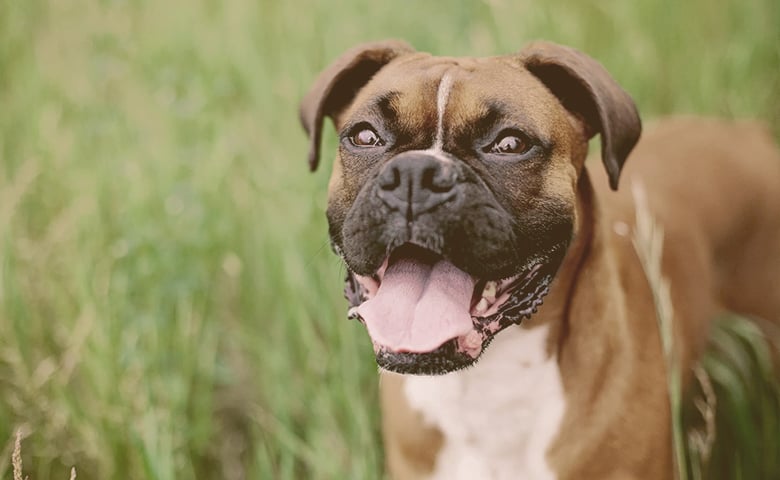
Boxers are the awkward teen of the dog world, full of lovable energy that will fit into any group of people. Originally bred as working dogs, these pups form strong bonds with the people who take them in. They serve as protectors, but also playmates with their iconic front paw motion that earned them their name.
These medium-sized pups have a lifespan of 10-12 years. Thanks to breeding, they are prone to many health issues that decrease the lifespan of the Boxer. They have a short lifespan compared to many other dogs in their size. The main complexities that harm a Boxer’s life span include:
- Cancer, particularly brain tumors and other forms of tumor
- Boxer colitis
- Heart disease
Many of these items can be prevented or taken care of, which can allow the Boxer to live much longer than their predicted lifespan. However, the main thing that determines how long this dog will live is genetics. That is out of our control.
The Neopolitan Mastiff
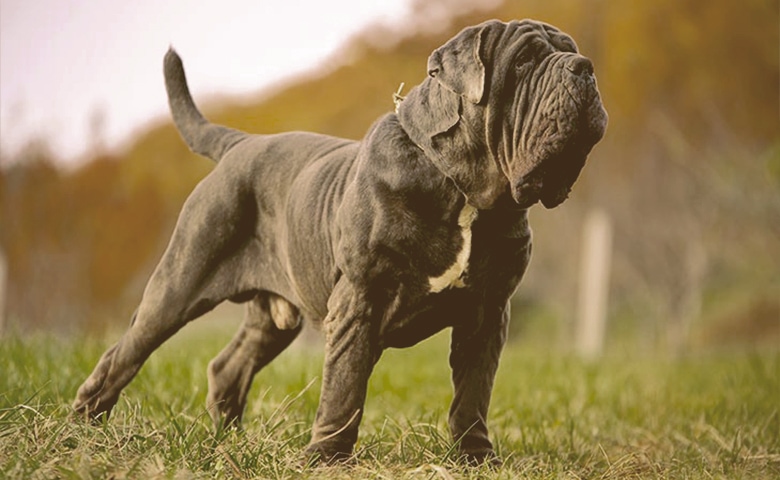
The Neopolitan Mastiff is a version of the Mastiff breed. They are used as guard dogs and are impressive to see thanks to the flaps of skin that cover their bodies. Neopolitan Mastiffs are known for being easy-going and gentle. They are loyal family dogs that will protect their family until they cannot anymore.
Since Neopolitan Mastiffs have such unique features, breeding and size have left their lifespan at a range of 8-10 years. The health problems that often lead to their early demise include:
- Cardiomyopathy
- Mitral Dysplasia
- Subaortic Stenosis
Neopolitan Mastiff’s heart valves cannot keep up with them as they age. This is common, so any owner should be prepared for this if they choose to become a caretaker for this majestic creature. The personality of this dog makes up for the lost time in years.
The Bullmastiff
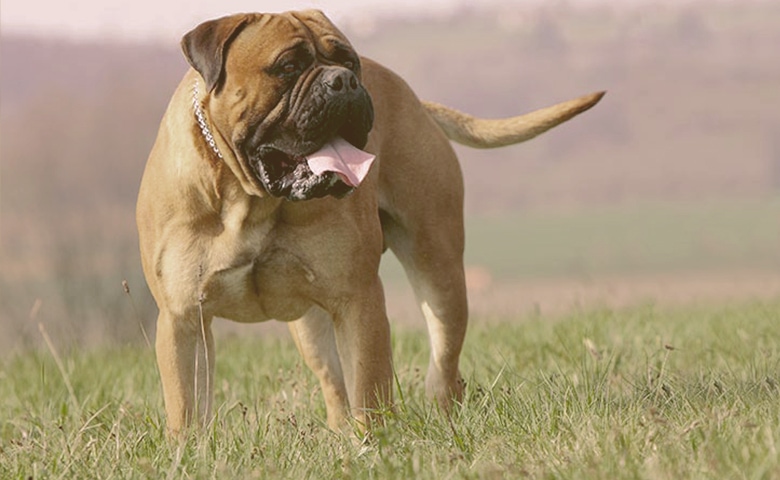
The Bullmastiff is another variety of the overarching Mastiff breed. They were created in Europe to serve as guard dogs for large estates. Because of this, they carry traits of powerful loyalty, reliability, and courage. The Bullmastiff is a gentle giant that will be faithful to its masters until the very end.
Size is, again, a huge factor in the length of time that these pups survive. Their lifespan is about 8-10 years. This is standard for dogs of this size, and some can even make it longer if their genetics allow them to do so. The most common health issues for Bullmastiffs are:
- Cancer, particularly in the bones
- Subaortic Stenosis
- Stomach torsions
- Hypothyroidism
These problems can be understood and made clear before they become serious issues in the future. There may be certain medications that can prolong a Bullmastiff’s lifespan and prepare the family for what is to come.
The Leonberger
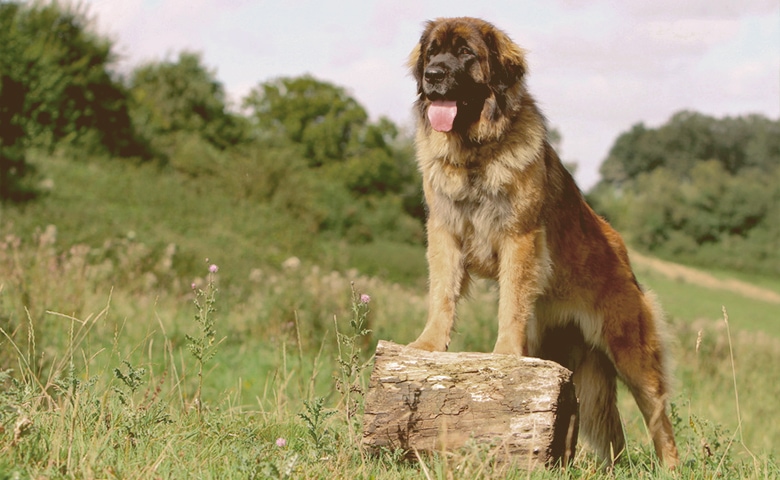
The Leonberger is a unique dog, bred in Germany to resemble a lion with its mass of fluff and fur. They act mainly as working animals but also serve as protectors for their families. This dog tends to be obedient, loving, and loyal to an extent that will make any individual fall in love with them on the spot.
The Leonberger is a big dog, and as with all large dogs, there are problems that they will face. Despite its mixed background, its lifespan is very short. Most dogs of this breed only make it 8-9 years, though this may vary based on genetics. The health problems a Leonberger faces are:
- Cancer, especially in the bones
- Heart disease
- Gastric torsion
Many of these issues can be caught early on and treated. Some of them are tricky to spot, however. No matter what, this cuddly giant is a family dog that will make every single day a good day regardless of what is going on.
The Newfoundland
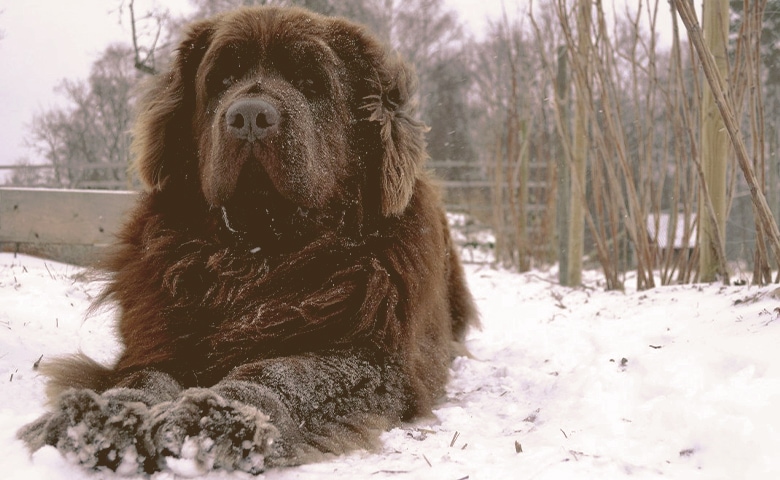
This breed originates from a small piece of Canada bordering the ocean. The Newfoundland was originally bred as a working dog, mainly to help the fishermen who made their living off of the coast. Ever since this dog has emerged in popularity for its intelligent and curious nature. It makes for a sweet family dog.
The Newfoundland is a big dog, and with that size comes a variety of health issues that impact the lifespan. The Newfoundland dog’s range of years to live is between 8-10 years. This is not a long time, but pretty good for a dog of similar size. The health issues that shorten this lifespan include:
- Gastric Torsion
- Subaortic Stenosis
- Cystinuria
- Epilepsy
Though they are not as prone to cancer as other breeds, these health issues still greatly impact this giant working dog. Owners should take care to notice when these issues start to appear, as the earlier, they are taken care of the longer the pup can expect to live.
The French Bulldog
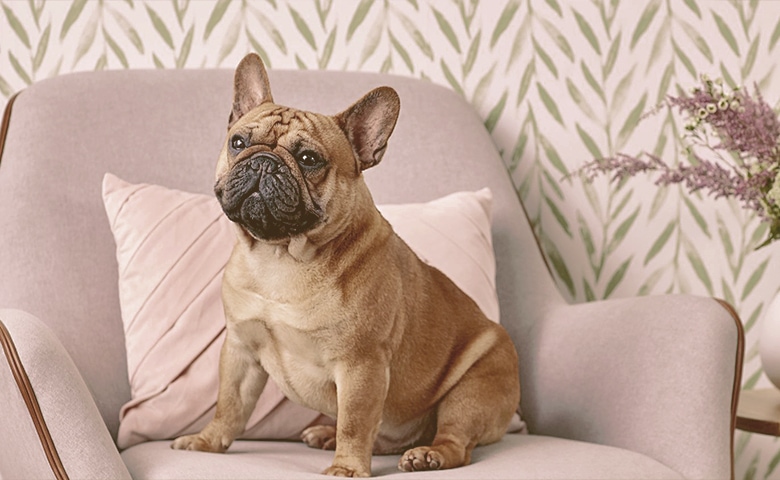
The French Bulldog is the smallest on this list, which typically means that a dog will live for a long time. Unfortunately, this adorable breed only has a lifespan of 9-12 years. While this is pretty long compared to some of the bigger dogs, it is incredibly short if you are looking at the lifespans of the other small dogs.
Disease and health problems that have resulted from years of inbreeding create this dog’s minimal years. Some of these internal issues that impact them include:
- Cancer, normally of the breast tissue and cells
- Gastric Torsion, which is an intense form of bloat
- Hip dysplasia
- IVDD (Intervertebral Disk Disease)
- Breathing-related heart failure, caused by years of inbreeding
- Addison’s disease, a sickness that comes from the underproduction of steroid hormones
- Hemangiosarcoma, or malignant tumors that occur in dogs
- Hypoglycemia, or low blood sugar that can result in canine diabetes
If a dog is bred well enough, it can live up to 14 years. Unfortunately for most French Bulldogs, they will succumb to one of these health issues by the age of 12. Despite these issues, French Bulldogs continue to rise in popularity all across the nation and in households everywhere.
The Shetland Sheepdog
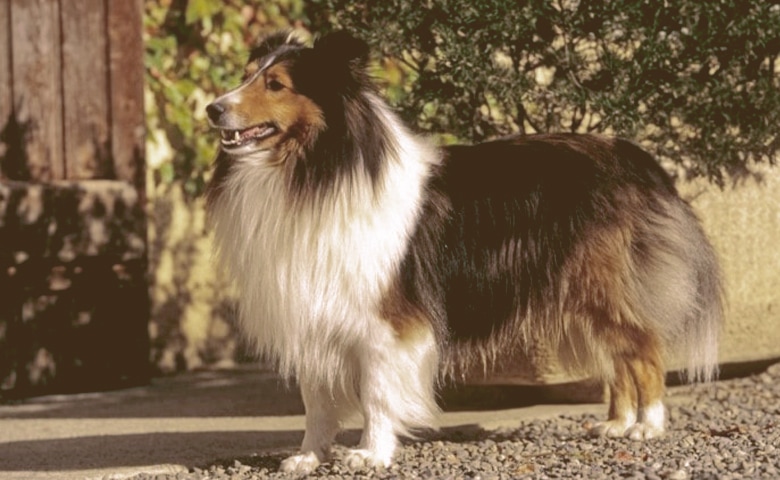
These high-energy pups are known for their gentle and sweet personalities. Bred to herd animals, Shetland Sheepdogs serve as protectors while also enjoying the life of a house dog. They are great for anyone who is constantly on the move but also wants a dog that will take it easy with them when the time comes.
Shetland Sheepdogs have one of the longest life expectancies on this list. They range from 12-13 years, though some might live longer. These years are more than the big dogs, but not that many for a dog of the Sheltie’s size. The health issues that plague the Shetland Sheepdog include:
- Lupus, which is an autoimmune disease in which the body attacks itself
- Heart disease
- Multidrug resistance
- Bleeding disorders
Any of these items can affect a Shetland Sheepdog at any point in their lives. Some of the healthiest Shelties have lived much longer than the predicted lifespan, but this only happens on rare occasions. The high-energy dogs will keep on going until they cannot any longer.
The Rottweiler
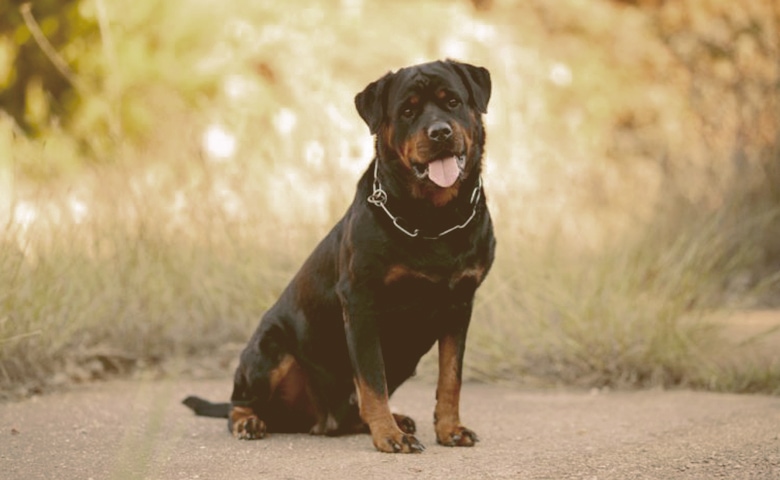
The Rottweiler is one of the toughest dogs on this list, bred through and through to be a working-class defense dog. These pups still serve as protectors in our modern age. They are affectionate and loyal, to the point of aggression on the occasion. They are good family animals for those who want to feel safe.
The Rottweiler has a life expectancy range of 8-12 years, which is short but pretty long for a big dog. As with most dogs, there are a few key items that tend to take over their lives as they age. These might be:
- Cancer, typically a Lymphoma of some kind
- Progressive Retinal Atrophy
- Aortic Stenosis
Cancer is the most common health problem that takes the Rottweiler at an early age. Though it is more common in older pups, it can be found in the younger ones as well. This is the case for many big dogs that have become popular family pets over the past hundreds of years. Keep this in mind if you invest in one.
The Scottish Deerhound
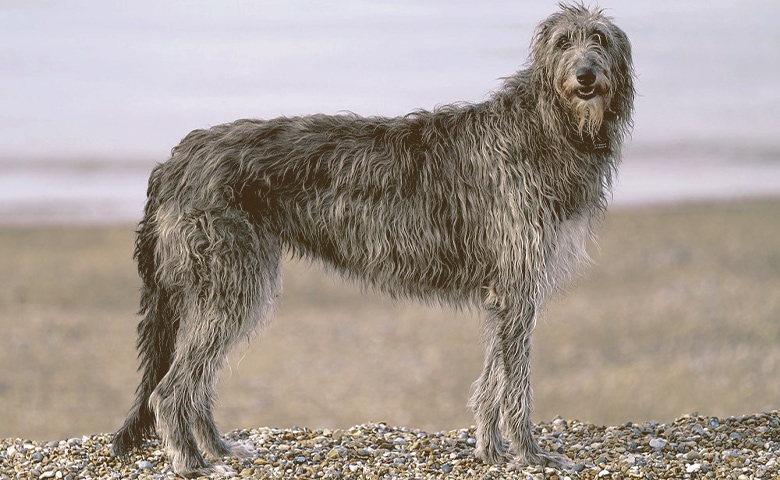
The Scottish Deerhound is a unique pup that exists in many homes around the world. They originate from Scotland, initially bred for hunting. They are very mild-mannered and polite pups to have, good for those who do not want a high-energy canine.
Unfortunately, their size is a huge contributing factor to a short lifespan for these pups. On average, they will only live 6-10 short years. Most do not make it into the double digits, though there are always a few outliers. The main causes of death for these majestic canines include:
- Cancer, particularly of the bones
- Heart disease
- Bloat in the stomach region
Like the other big dogs, the case is often that their bodies simply cannot keep up with how the dog is aging. They are not able to continue with daily life when they get to this point to allow their bodies the time to catch up.
The Greater Swiss Mountain Dog
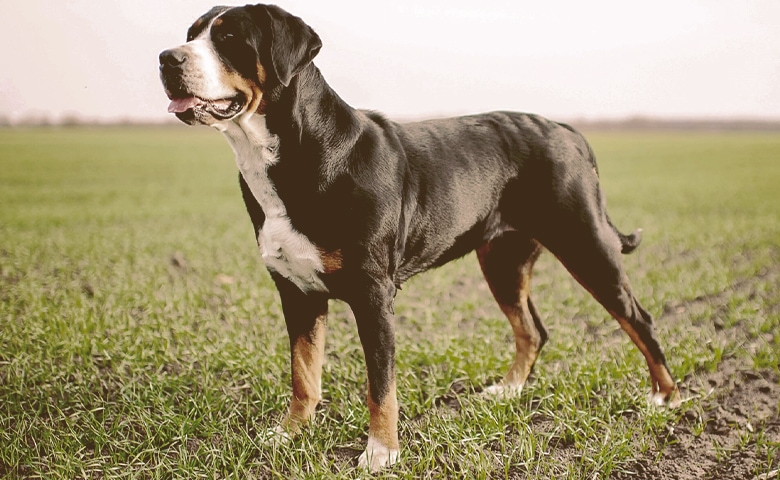
The Greater Swiss Mountain Dog is a confident breed that was originally bred in the Swiss Alps. These pups are herding dogs with impressive devotion, fearlessness, and gentleness that make them excellent family pets. They like to be kept busy all of the time.
This sweet dog has a lifespan that ranges from 10-11 years. Most commonly, their lives are put to an early end by items such as:
- Epilepsy
- Gastric dilation volvulus, or extreme bloat in the stomach
Although these rare pups do not live for an impressive amount of years, they prove time and time again that they are perfect for any home. Any decision to invest in a Greater Swiss Mountain Dog is a good one, as they will bring an energetic joy to your space no matter where you are.
The Chinese Shar-Pei
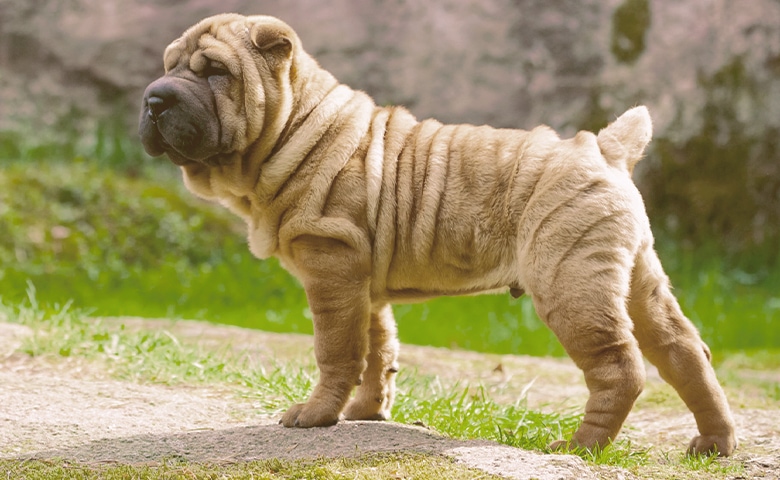
The Chinese Shar-Pei is a dog often sought after due to the unique wrinkled skin that lines its body. This pup is affectionate and loving, excellent for any type of individual. They operate well as pets to single people, couples, and families alike. The Chinese Shar-Pei is bound to make anyone smile.
Due to reproductive problems and other internal issues, Chinese Shar-Pei is only able to live around 9-11 years. This is not very long for a dog that is not large. The main factors that limit the time that they live includes:
- Autoimmune thyroiditis
- Skinfold infections, which if left unchecked can quickly become deadly
- Inflammatory disease, which can lead to many other issues such as anorexia and swelling of the abdomen
If you choose to invest in a Chinese Shar-Pei, make sure that you purchase one from a reliable source. Inbreeding from untrustworthy locations can lead to issues with this breed that could decrease the length of time that they live even further.
Though the Chinese Shar-Pei is adorable, they are a type of dog that will continue to gain health issues as the breed grows more popular. Inbreeding may lead them down a similar path as types like the English Bulldog and the French Bulldog.
Sources
The Puppy Place
TopDogTips
FamilyMinded
The Scottish Deerhound Club of America
canna-pet

